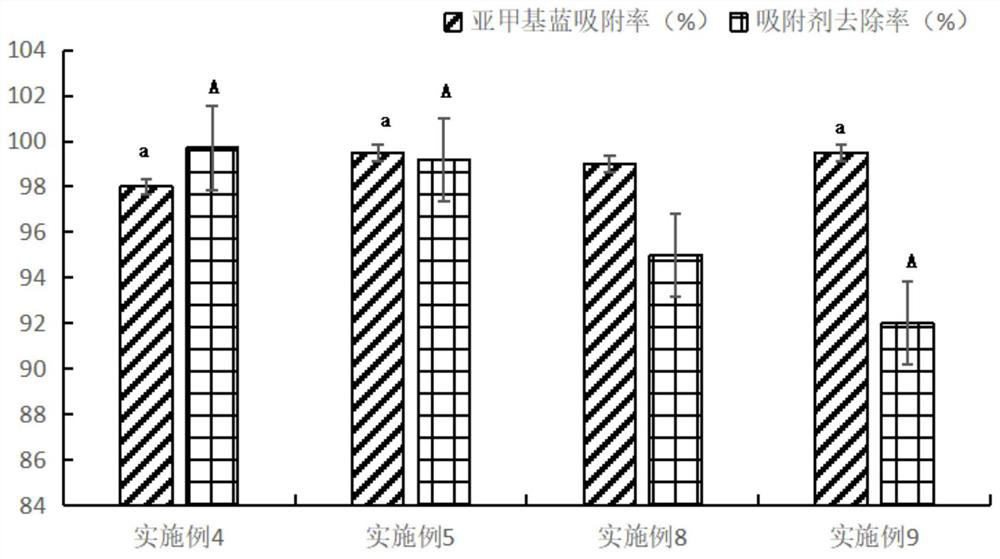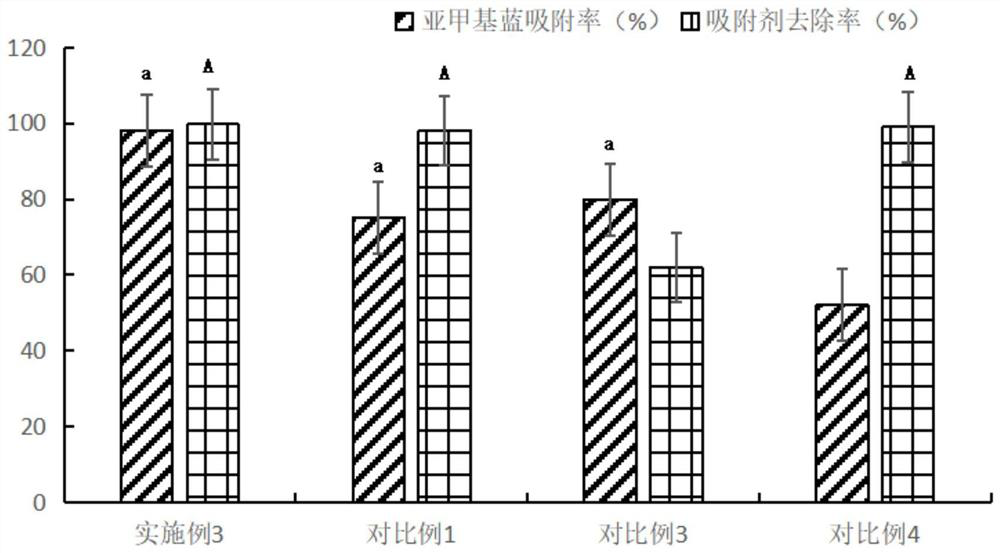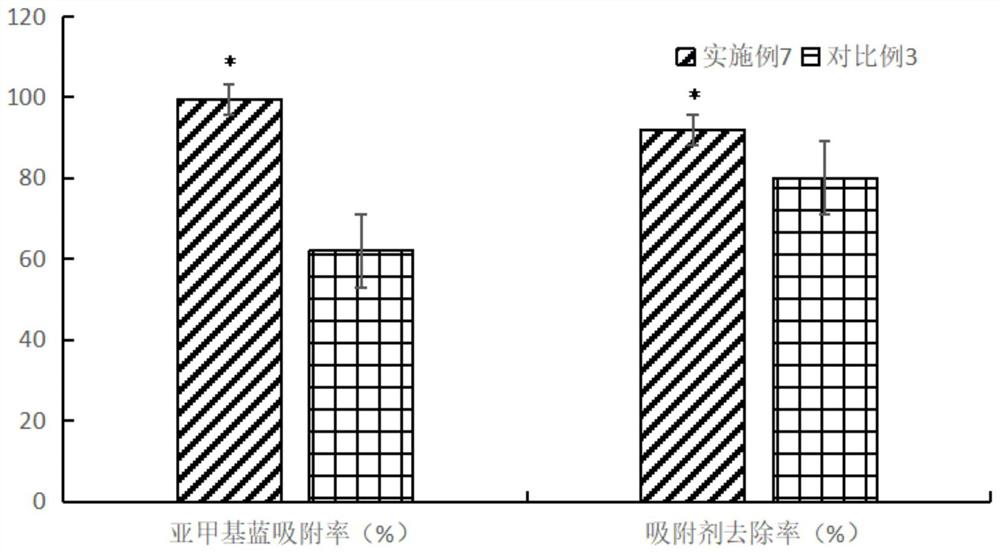Adsorption application of modified mussel shells to methylene blue
A mussel shell and modification technology, which is applied in the field of modified mussel shell and its preparation method and the application field of methylene blue adsorption, can solve the problems of aggravating the difficulty of decolorization treatment of printing and dyeing wastewater, complex components, high concentration, etc., and achieve good dye adsorption performance , Modification conditions are simple, improve the effect of adsorption
- Summary
- Abstract
- Description
- Claims
- Application Information
AI Technical Summary
Problems solved by technology
Method used
Image
Examples
Embodiment 1
[0032] A preparation method of modified mussel shells, comprising the following steps:
[0033] S1. Preparation of magnetic nanoparticles: In a nitrogen atmosphere, 1g of ferric chloride hexahydrate and 2g of ferrous chloride tetrahydrate were heated up to a reaction temperature of 50°C, and then 10mL of 20wt% ammonia water was added dropwise, and reacted at a constant temperature under nitrogen protection for 2h. to room temperature, the synthesized magnetic nanoparticles were washed three times with deionized water, separated by a magnet, and set aside;
[0034] S2. Pre-treatment of mussel shells: clean the mussel shells brought back from the farm, remove the remaining shell meat, silk, and moss on the surface, dry them at 100°C, and put them into a high-temperature resistance furnace for high-temperature carbonization under nitrogen protection. Raise the temperature by 50°C every 10 minutes, up to 800°C, cool down after carbonization for 30 minutes, grind finely, and set as...
Embodiment 2
[0038] A preparation method of modified mussel shells, comprising the following steps:
[0039] S1. Preparation of magnetic nanoparticles: In a nitrogen atmosphere, 1g of ferric chloride hexahydrate and 3g of ferrous chloride tetrahydrate are heated to a reaction temperature of 60°C, and then 30mL of 24wt% ammonia water is added dropwise. to room temperature, the synthesized magnetic nanoparticles were washed three times with deionized water, separated by a magnet, and set aside;
[0040] S2. Pre-treatment of mussel shells: clean the mussel shells brought back from the farm, remove the remaining shell meat, silk, and moss on the surface, dry them at 100°C, and put them into a high-temperature resistance furnace for high-temperature carbonization under nitrogen protection. Raise the temperature by 50°C every 10 minutes, up to 800°C, cool down after carbonization for 30 minutes, grind finely, and set aside;
[0041]S3. Preparation of magnetic mussel shells: 2g of magnetic nanop...
Embodiment 3
[0044] A preparation method of modified mussel shells, comprising the following steps:
[0045] S1. Preparation of magnetic nanoparticles: 1g of ferric chloride hexahydrate and 2.5g of ferrous chloride tetrahydrate were heated to a reaction temperature of 55°C in a nitrogen atmosphere, then 20mL of 22wt% ammonia water was added dropwise, and reacted at constant temperature for 3.5h under nitrogen protection , down to room temperature, the synthesized magnetic nanoparticles were washed three times with deionized water, separated by a magnet, and set aside;
[0046] S2. Pre-treatment of mussel shells: clean the mussel shells brought back from the farm, remove the remaining shell meat, silk, and moss on the surface, dry them at 100°C, and put them into a high-temperature resistance furnace for high-temperature carbonization under nitrogen protection. Raise the temperature by 50°C every 10 minutes, up to 800°C, cool down after carbonization for 30 minutes, grind finely, and set as...
PUM
 Login to View More
Login to View More Abstract
Description
Claims
Application Information
 Login to View More
Login to View More - R&D
- Intellectual Property
- Life Sciences
- Materials
- Tech Scout
- Unparalleled Data Quality
- Higher Quality Content
- 60% Fewer Hallucinations
Browse by: Latest US Patents, China's latest patents, Technical Efficacy Thesaurus, Application Domain, Technology Topic, Popular Technical Reports.
© 2025 PatSnap. All rights reserved.Legal|Privacy policy|Modern Slavery Act Transparency Statement|Sitemap|About US| Contact US: help@patsnap.com



